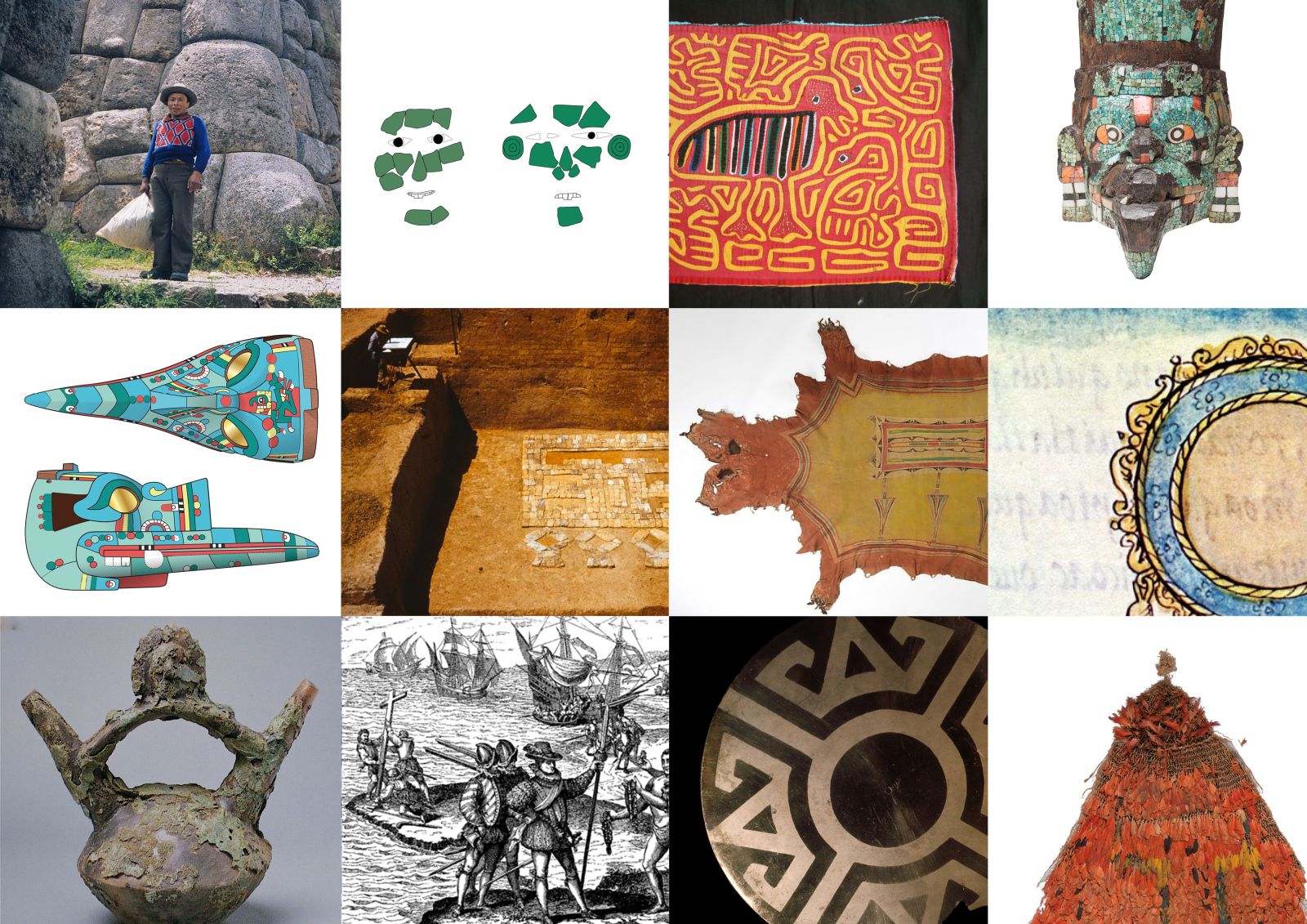Symposium
Amerindian Art Histories and Archaeologies:
A KHI – UCL Symposium on Material Transformations in the Indigenous Americas
In the framework of Department Gerhard Wolf and the “4A Laboratory: Art Histories, Archaeologies, Anthropologies, Aesthetics” (Kunsthistorisches Institut in Florenz – Max-Planck-Institut and the Stiftung Preußischer Kulturbesitz (Prussian Cultural Heritage Foundation)), in collaboration with UCL Institute of Archaeology
Organized by Sanja Savkić Šebek (KHI in Florenz – Max-Planck-Institut & Humboldt-Universität zu Berlin), Bat-ami Artzi (CSoC, Ben-Gurion University of the Negev; former 4A_Lab Fellow) & Elizabeth Baquedano (UCL Institute of Archaeology)

The KHI – UCL symposium convenes art historians, archaeologists, anthropologists and curators who share interests in the transformative potential of matter and materials stemming from different social and aesthetic practices. These practices are manifest in creative works produced by indigenous peoples across the Americas from ancient times to the present. In each of the four sessions, three researchers will bring into conversation case studies from a diverse set of indigenous cultural traditions and address a specific type of materiality. Namely, they will address the materiality of stones, metals, color, as well as multi-materiality and multisensory creations and experiences, their functions, uses and reception from ancient, colonial and contemporary indigenous societies from Brazil, the Central Andes, Panama, Mesoamerica and North America.
Materiality is currently a focus area of research in art history and archaeology as well as in a number of related disciplines. Studies of Amerindian creations with a “pragmatic approach” are particularly stimulating as they further underline the importance of ritual action for the engagement with material culture. According to this perspective, the meanings of (art)works are not only metaphorical, they are lie in the choice of raw materials and in the techniques and processes of their making. As such, the materials themselves are what is privileged, as well as working with them (in terms of a knowledge-practice or ritual action).
In numerous Amerindian myths, raw materials such as clay, wood, bone, maize, among many others, have a central place. Consider for instance a Chimu tradition of the Peruvian northern coast which recounts the origin of the people as deriving from three eggs: one made of gold, one of silver, and one of copper. This illustrates a conceptualization that material support not only connects to the very essence of humans, but also of other beings and artifacts. Further, artistic materials are not some inert substances, rather they are thought to possess life force and agency, which become fully expressed through the process of creation. In this way, in efforts to understand different Amerindian artistic expressions, it is necessary to take the material support into consideration as an inseparable layer of any object (that is, when substance changes from one thing to another), which contributes to the core of the piece, its being, aesthetics and function.
This symposium’s participants will attend to the several interrelated issues: 1) the processing of matter adapted for different functions, with changing texture, surface and deep structure, aesthetic and other properties and qualities, such as transformation of the energy of light into substantial forms and the colour embodied in the material; 2) materiality as expressed in mythologies and cosmologies; 3) the processes of image-making and the power materialized in images; 4) animated materials and their agency; 5) materiality as an expression of time, sanctity, rulership and identity; 6) holistic perspective on material extraction, transformation and use; 7) technology as a way to create meaning and value. Additionally, participants will explore Indigenous intellectual engagements with material phenomena like understandings of materiality, how it embodies the sacred, and how different materialities—human, animal, environmental—act on each other in artistic contexts.
Twelve participating scholars will present on the following topics, followed by Q&A and discussion.
The events will be recorded and shared online afterwards.
Program
1 February 2023, 17:00 CET / 16:00 GMT
Session 1: Interplay between materialities and sensory experience
Nicholas J. Saunders (University of Bristol), Max Carocci (Richmond American University London) & Paolo Fortis (Durham University)
Discussant: Diana Magaloni (Los Angeles County Museum of Art)
Session 1 Zoom Registration Link | Abstracts & Biographies
8 February 2023, 17:00 CET / 16:00 GMT
Session 2: Working with stone
Juan Carlos Meléndez (CNRS / Université Paris 1 – Panthéon-Sorbonne), Davide Domenici (University of Bologna) & Catherine J. Allen (George Washington University)
Discussant: Zachary Hruby (Northern Kentucky University)
Session 2 Zoom Registration Link | Abstracts & Biographies
15 February 2023, 17:00 CET / 16:00 GMT
Session 3: Between liquid and solid: metals and their transformation
Blanca Maldonado (El Colegio de Michoacán), Ana María Falchetti (Former Deputy Director of the Museo del Oro, Bogota) & Izumi Shimada (Southern Illinois University)
Discussant: Elizabeth Paris (University of Calgary)
Session 3 Zoom Registration Link | Abstracts & Biographies
22 February 2023, 17:00 CET / 16:00 GMT
Session 4. The materiality of color: pigments, painted skins, and feathers
Claudia Brittenham (University of Chicago), Élodie Dupey García (Universidad Nacional Autónoma de México) & Amy Buono (Chapman University)
Discussant: Gabriela Siracusano (University of Buenos Aires)
Session 4 Zoom Registration Link | Abstracts & Biographies
Contacts
Sanja Savkić Šebek | Wiss. Mitarbeiterin, Projekt "Bilderfahrzeuge", KHI | sanja.savkic@khi.fi.it
Bat-ami Artzi | CSoC, Ben-Gurion University of the Negev; former 4A_Lab Fellow | bat-ami.artzi@mail.huji.ac.il
Elizabeth Baquedano | UCL Institute of Archaeology | e.baquedano@ucl.ac.uk
Downloads
01 – 22 February 2023
This event will take place online.
To participate please register in advance via Zoom.
Please note that a separate registration is necessary for each session.
You will find the registration links in the program above and on the pages of the respective sessions.
Notice
This event will be documented photographically and/or recorded on video. Please let us know if you do not agree with the Kunsthistorisches Institut in Florenz using images in which you might be recognizable for event documentation and public relation purposes (e.g. social media).


